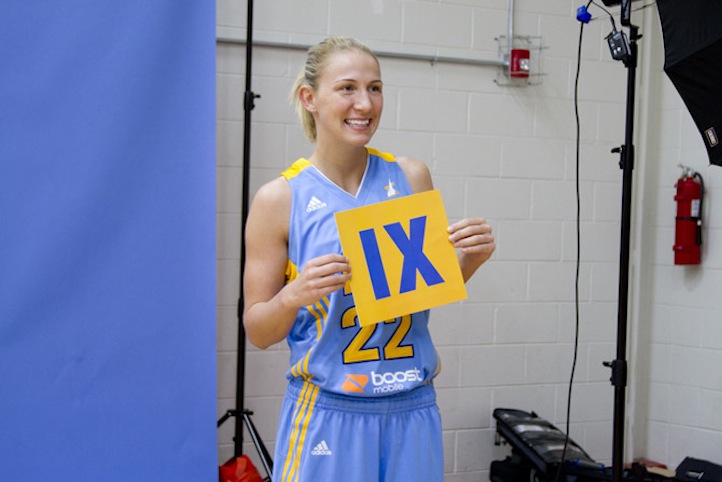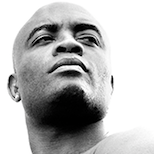The Impact of Title IX on Women’s Sports
05.29.2012
SPORTS
This May marks the 40th anniversary of Title IX, the crucial piece of legislation passed in 1972 that worked to ensure women’s rights and combat gender discrimination, particularly in high school and college academia and athletics. In sports, it’s guaranteed equivalent, but not necessarily identical, opportunities for females.
“It’s really important,” said second-year Chicago Sky all-star point guard Courtney Vandersloot, “and it’s really special for women athletes because we’re out here living our dream and before Title IX it wasn’t possible. It’s a real turning point in our history and you see a lot of women, not only in sports but in the real world, being part of their communities in ways that wouldn’t have if Title IX wouldn’t have been passed.”
With Title IX in place, opportunities for girls to become involved in sports at a young age emerged, the chance to continue those careers through high school and college increased, and women’s professional sports, specifically the WNBA, have been great beneficiaries. Entering it’s 16th season, which began on May 18th, the league would not exist had it not been for the 1972 legislation.
“The WNBA wouldn’t exist if it wasn’t for Title IX,” said Vandersloot. “We’ve seen the WNBA develop a lot and these girls are being able to play at a much younger age, having more opportunities, and in turn you see a great league like the WNBA where there are good role models. These women are very, very talented and special individuals.”

“Title IX has been a great deal for us women — it’s the 40th year anniversary,” added Sky forward Sylvia Fowles, also a member of the U.S. Women’s National Basketball team competing in this summer’s Olympics. “I think the women before us paid a great deed for us to be in this position that we’re in now. For younger to have this opportunity to look up to us, and us be role models, trying to drag it on for them to have this opportunity, as well, in the next few years [is great].
Fowles sees one those deed-paying women she mentioned on a daily basis. Her coach, Pokey Chatman, is one of women’s basketball leading pioneers, and has been so for her entire life, as she’s seen the evolution of women’s basketball and Title IX from the beginning.
“It’s everything to me,” Chatman said of Title IX. “I’m in that age bracket — I’ll be 43 this year — where I went from player to coach and a lot of changes were taking place. They were adding women’s sports, salaries for coaches were going up. I also was alongside Sue Gunter, who was a pioneer of the game, I got to see all the changes through her eyes, as well. So to see some of the things that have taken place now, to be a general manager and head coach of a professional franchise, I’ve benefitted tremendously from it [Title IX].
Chatman was an All-American athlete at LSU, spending 20 years there, moving from player to assistant coach to head coach. Continuing to move up the sports’ ladder, she’s now head coach and general manager of the Chicago Sky WNBA franchise.

“What would we be doing?” if there was no Title IX or WNBA, she asked. “Girls would just be overseas or starting their families a little bit earlier, working 9-to-5s. That’s why I look at my experience — from collegiate player to collegiate assistant coach, head coach and now leader of this product — and it’s like, ‘Are you kidding me?’ It’s been everything to me. With the early opportunities and the attractiveness of coaching the game, you can just see the level [of play] spread and rise. There’s so many more participating and participating at a higher level. It’s sexy now to be in women’s basketball. For me, I marvel at the level of play. I’m watching YouTube videos of a 15-year-old female dunking. Really? She’s 5-foot-9, are you serious?”
The league is still fairly new, but it’s grown in that short time, without question. Announcing “We Got Next” in 1997, the WNBA began with eight teams, all of which were initially backed by the NBA. There are now 12 teams, some still closely associated with NBA franchises, while others are independently owned. The 2011-2012 season marked the fifth consecutive season that attendance increased, and was one of the league’s viewership seasons ever.
“A lot of young girls during my time grew up saying I want to play in the NBA,” said Fowles. “So to have this position to have women be able to go out there and compete, it’s good.”
All this being said — the power and significance of Title IX, and the growth of the WNBA — there is still much work to be done, as men’s professional sports still dominate conversation and visibility.
“Granted, we know there’s still a lot of work to do, but it’s the people that are fighting to keep it alive that are creating great opportunities,” said Chatman. “As we all know, money helps a lot. But I think women’s basketball, even though we’re at the professional level, it’s always grassroots. Something that we can offer that’s a little bit different from the men’s side is that it’s a warm contact with women’s basketball. You come to a professional game, you might be able to reach out and touch Sylvia Fowles. If we get people in the stands, they thoroughly enjoy the total experience. From entertainment for their families and their children, accessibility of the players, that keeps them coming back. It’s not a one-time thing.”
Behind the guidance and leadership of Chatman and others, the WNBA’s growth should continue as the effects of Title IX remain as critical as ever.





